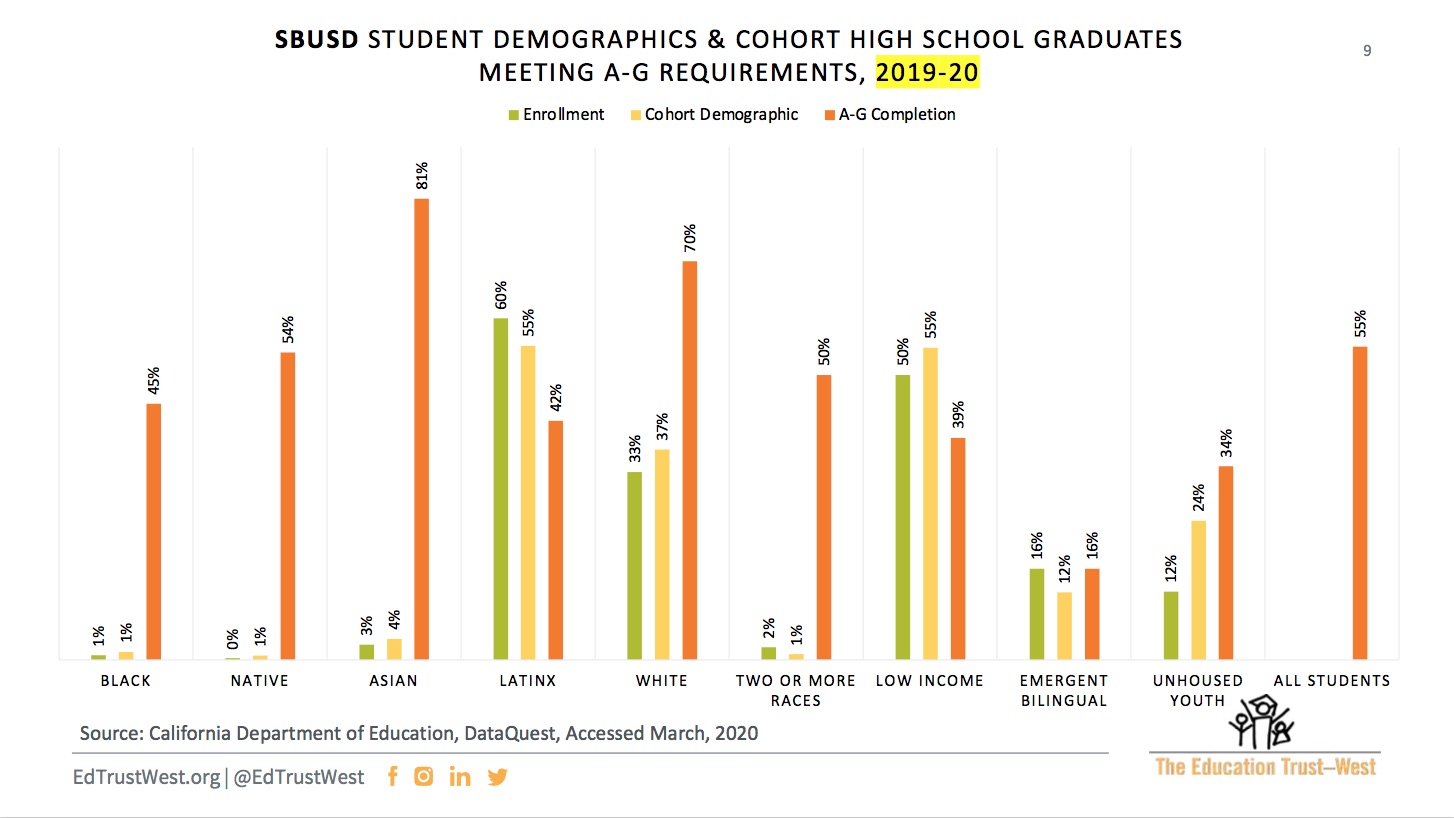College Readiness for English Learners Needs Early Groundwork
McKinley’s Dual Language School Conversion May Be Too Much Too Soon

Regarding the recent article “Santa Barbara’s Black, Latinx Grads Less Likely to Get into California’s Public Universities,” the graph shown from the Santa Barbara Unified School District is incomplete and fails to show the most unrepresented groups: the Emergent Bilingual learners and the unhoused youth.
Graphs prepared by the district’s consultant shows all the groups by demographics, including the Emergent Bilingual learners, who look to be the lowest performing of all groups, coming in at 16 percent, almost half the rate of the next smallest cohort — unhoused youth at 34 percent.
The low numbers for emergent multilingual students in meeting A-G college entrance requirements are saddening and sickening, also coming in below economically disadvantaged learners.
Are LCAP (Local Control and Accountability Plan) funds being correctly spent on the most vulnerable groups of under-represented students in meeting the A-G requirements to enter into UC and CSU colleges? It’s the chicken and the egg; you can’t just talk about secondary scores without understanding what came first.
There seems to be a disconnect with what happens before students enter secondary education to produce this outcome. What happens prior to 5th grade? Is data available that is broken down by each school as to the numbers of multilingual students who pass the state-required English proficiency test (ELPAC) at the end of 5th grade?
Unless these emergent English students pass this test, it is unlikely that they will be reclassified; instead, they remain English learners while in the district. How would they even begin to take the same prep classes with this language deficit?
It is well worth taking a closer look at this: What opportunity was missed or could have been done differently within early years that could have made a difference in their outcomes?
The emotional end of that district meeting on June 22, 2021, (which can be seen in the last half hour posted at YouTube) was encouraging only from one aspect, which is pivotal for improvement. The board acknowledged and agreed, you can’t talk about outcomes for secondary education without understanding what happened at the elementary level. They understand that kids are being hurt by a failure of the school system to support them and evaluate them earlier, and the opportunities they miss as a result of this.
It was an honest hard discussion recognizing the importance of periodic evaluation all the way in K-12. One of the most direct comments was from Wendy Moten-Sims, who stated, “We need to talk about the ugly to fix this,” and she stressed the importance of early intervention in addressing educational equity.
To take a deeper dive, how is Franklin Elementary getting the amazing results above state average with both English and math in setting up their students for success? Let’s compare scores between two schools with similar demographics, about 95 percent Latino students according to greatschools.org
Franklin Elementary’s English scores come in at 57 percent versus the state average of 51. The students’ math is at 49 percent versus the state at 40.
Adelante Charter School, which is a Dual Language Immersion school, shows English at 19 percent versus the state average 51. Their math is at 27 percent versus state average at 40 percent.
Are Dual Language Immersion students required to participate in the STAR testing in grades 2 thru 6 for English and math? Is this broken down by school? This is all important to measure progress of English acquisition and foundational math for accessing and intervention in improving the student’s achievement in these areas.
To convert McKinley to a Dual Language Immersion school without supportive data is scary and unprecedented. This fall, McKinley Elementary School will be converted to a Dual Language Immersion school with 90 percent Spanish instruction and 10 percent in English starting in kindergarten. The following year, first grade will maintain the same model. Starting at second grade, an additional 10 percent of teaching in English will be added each year, reaching 50 percent English by 5th grade.
How will this help them on their English proficiency test (ELPAC) test that is required by the end of 5th grade?
Unlike Adelante, a charter school that families make the choice to attend, McKinley is a neighborhood school that has a neighborhood boundary with no busing. If a family wants all-English instruction, they will have to opt out and transfer to another school, if one is available, and provide their own transportation, according to the district.
Concerns over McKinley’s entire school conversion — and the collateral damage to date with 19 of 28 staff and teachers moved, some with involuntary transfers — has a grassroots group over summer sizzling. The school that the McKinley’s principal came from, Juana Sorria in Oxnard, has one track in Dual Language Immersion and one in all-English, as does Canaliño Elementary School in Carpinteria.
SOS (Save Our School) McKinley continues to advocate that one track left in English so families have a choice.



